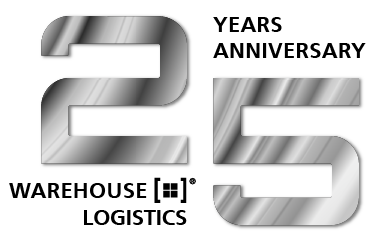News
Why Warehouse Leaders Must Think Like Air Traffic Controllers
25.08.2025
From Data Overload to Decision-Making Power.
In today’s warehouse logistics, data is not in short supply. The real challenge lies in putting that data to work. Managing a warehouse no longer means sitting in an office by the receiving dock. In a world of connected systems, real-time tracking, and global supply chains, warehouse leadership increasingly resembles air traffic control at a major international airport. The key difference is that instead of runways, warehouses handle countless parallel flows of materials, goods, and information.
At the same time, practice shows a highly uneven picture. While some companies have fully digitized their warehouses, others still work with printed picking lists, clipboards, and verbal instructions. Within the same organization, it is not uncommon to see modern real-time tracking in one area and manual, paper-driven processes in another.
The New Core Competency: Situational Awareness
A warehouse is not a static building. It is a dynamic nerve center. Every second, new data emerges: order status, transport times, inventory levels, temperature logs, equipment utilization, workforce availability. This variety of data is valuable only if it can be captured, connected, and used.
The problem is that too often, data is not collected where it is generated. Especially in warehouses, this is a critical barrier. Movements, sensor readings, and automation signals remain fragmented, unstructured, and stripped of context.
The result is that optimization potential goes untapped, inefficiencies remain hidden, and leaders are forced to react instead of proactively steering operations.
The Goal: Resilient, Adaptive Warehouse Logistics
The future of warehouse logistics is not defined only by increasing automation. Its foundation lies in standardization, transparency, and adaptability. Once those basics are in place, routine tasks and material flows can be automated. That creates capacity for efficiency gains and more stable processes.
At the same time, consistent data is captured directly at the source: every movement, every sensor, every resource use generates usable information. Based on this, systems can not only detect disruptions but also anticipate deviations, simulate scenarios, and recommend concrete courses of action.
As a result, the role of people in the warehouse evolves. Leaders move from firefighting to orchestrating resources, making decisions with a complete, real-time view.
The Paradigm Shift: From Reacting to Orchestrating
Shaping this future requires an operational real-time picture, a concept long standard in aviation, energy management, and maritime shipping. For warehouse logistics, such a picture must deliver three things:
- Integration: All relevant data streams flow into a central information hub, regardless of vendor or location.
- Prioritization: Not every deviation is a crisis. Smart filters highlight what is truly critical.
- Actionability: Instead of just displaying data, systems must present clear decision options.
The Strategic Value: From Disruptions to Control
The weak point of modern supply chains is not transport or storage itself. It is the ability to systematically anticipate deviations. Seeing the warehouse only as an inventory hub underestimates its strategic role. In reality, it acts as a sensor and early-warning system for shocks in the wider network. Inventory levels, throughput times, and process variations reveal patterns that determine future delivery performance and supply risks.
Using these early indicators consistently allows leadership to steer proactively instead of merely reacting.
In today’s volatile world shaped by weather events, geopolitics, and shifting customer demands, speed is more than a competitive edge. It is a survival strategy. But speed must be precise and targeted, not chaotic.
A central control concept makes this possible:
- Early warning, not firefighting: A Control Tower detects disruptions before they lead to delays or outages. It identifies bottlenecks, late shipments, and critical stock levels early on.
- Synchronized action across sites: From warehouse pickers to planners to corporate management, everyone works from the same real-time data and »speaks« the same operational language.
- Transparency as a leadership tool: What matters is not the number of KPIs, but their relevance to the specific decision-making level.
The result is that an unpredictable supply chain becomes a navigable flight zone. Warehouses transform into controlled airspace. Logistics leaders move from the engine room to the control tower, able to see all movements, set priorities, and actively orchestrate outcomes.
Bridging the Gap: From Concept to Practice with TIMESQUARE
Even the most experienced air traffic controller needs radar to detect every object in the sky. In logistics, that radar is a Supply Chain Control Tower like TIMESQUARE.
TIMESQUARE collects signals from every source, filters out noise, highlights critical deviations, and makes decision options visible. It translates the proven control tower principle from aviation and shipping into the daily reality of warehouse logistics.
Decisions are no longer based on assumptions but on a full, up-to-date situational picture. Warehouse leaders gain the ability to act, anticipate, and guide the course. This transforms logistics leadership into true tower management: capable, proactive, and always in control.
The Takeaway: Visibility Creates Competence
»Leadership in logistics« no longer means simply making shift plans or monitoring processes. It means keeping an overview when multiple streams move at once and ensuring everyone steers in the same direction.
In most warehouses, disruptions are the norm rather than the exception. That makes perspective all the more important: the ability to spot patterns before they become problems. Like an air traffic controller, logistics leaders do not execute every task themselves, but they know when to intervene. Effective leadership comes through visibility, clear priorities, and precise intervention.
